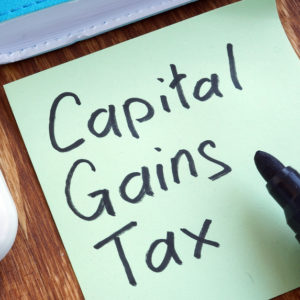Senator Ron Wyden of Oregon, the highest-ranking Democrat on the Senate Finance Committee, released details this week on a new plan to raise taxes on investment. The proposal, known in tax circles as “mark-to-market,” would impose taxes on an asset every year based on its market value, not just when that asset is eventually sold.
This idea, while not a new one, has never taken hold and, given the multitude of issues with the proposal, it should stay that way. By punitively punishing investment and increasing uncertainty for federal tax revenue, mark-to-market taxation is an idea whose time has not come.
Wyden’s proposal would completely overhaul the way that capital gains are taxed in the United States. First, the tax rate would climb significantly. The top rate would jump from 23.8 percent to 37 percent.
How the tax is calculated would change too. Currently, investors are taxed only when gains are realized, meaning when the asset is sold. Under Wyden’s plan, investors would instead be taxed every year based on the market value of their assets.
There’s an allure to this idea. Why should investors get to delay paying taxes for years? But the devil is in the details. The reality is that mark-to-market would be an administrative and economic mess.
Though it seems simple in principle, it’s actually quite difficult to value assets. Sure, you can use the best cryptocurrency app on your phone and look at the stock ticker to find out the value of a share of a public company like Apple or General Electric, but wealthy investors own much more than stock. Other assets, such as an ownership stake in a private company, a painting, or a yacht, can be almost impossible to accurately value. Under Wyden’s proposal, valuations would be performed yearly, adding administrative headaches to taxpayers and an inordinate burden to the Internal Revenue Service.
Once those valuation questions have been handled, coming up with the cash necessary to pay the tax can be an additional burden. Imagine a small business owner whose assets are tied up in their company. Once they’ve settled on the value of the enterprise, they now must submit payment to the IRS. But they could be cash-strapped because ownership interests aren’t always liquid. Finding the cash needed to remit their newfound tax liability could pose a challenge, creating more stress and anxiety for the taxpayer.
Additionally, mark-to-market seems to make sense when assets are appreciating, but most proposals fall short when it comes to consideration of when assets depreciate. The tax code already penalizes investors for their capital losses. Investors can only deduct $3,000 in losses in any year, while having to pay tax on all of their gains. Mark-to-market would exacerbate this imbalance, taxing investors on paper gains but not allowing reductions for their losses.
Perhaps Wyden could modify his proposal and allow for full deductibility of losses, but that comes with another challenge: federal tax revenues would become even more volatile than they already are.
When the economy enters a downturn, tax revenues decrease. This makes sense; fewer individuals are working and earning income, and fewer companies have positive profits, decreasing business tax revenue. A mark-to-market plan with full deductibility of losses would make this worse by subjecting revenues to stock market swings. If the stock market goes down, revenues would decrease even more than they do today. Federal budgeting is tricky enough without directly tying revenues to stock market gyrations.
These are not new issues. Mark-to-market taxation has been considered on multiple occasions, but these major policy holes have doomed these proposals in the past. It is hoped this trend will continue, and this proposal stays on the shelf where it belongs.

